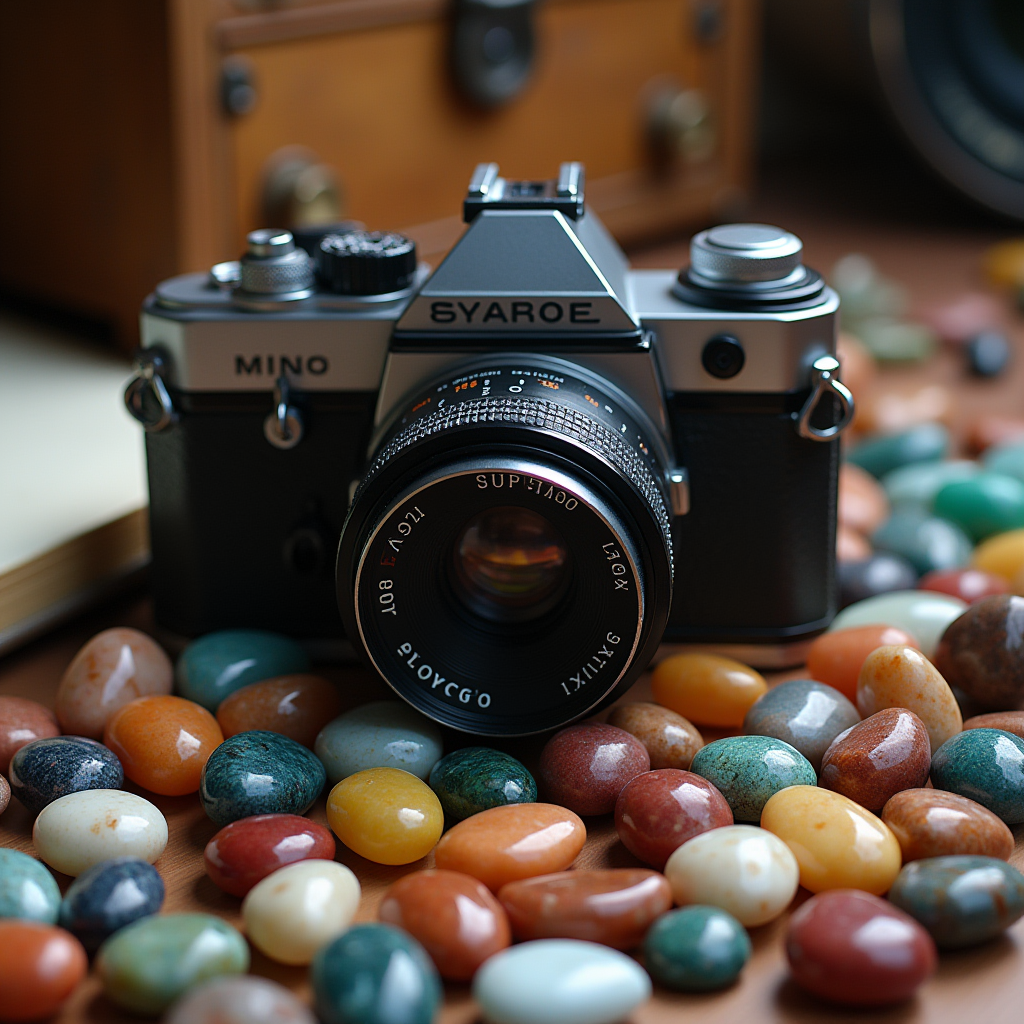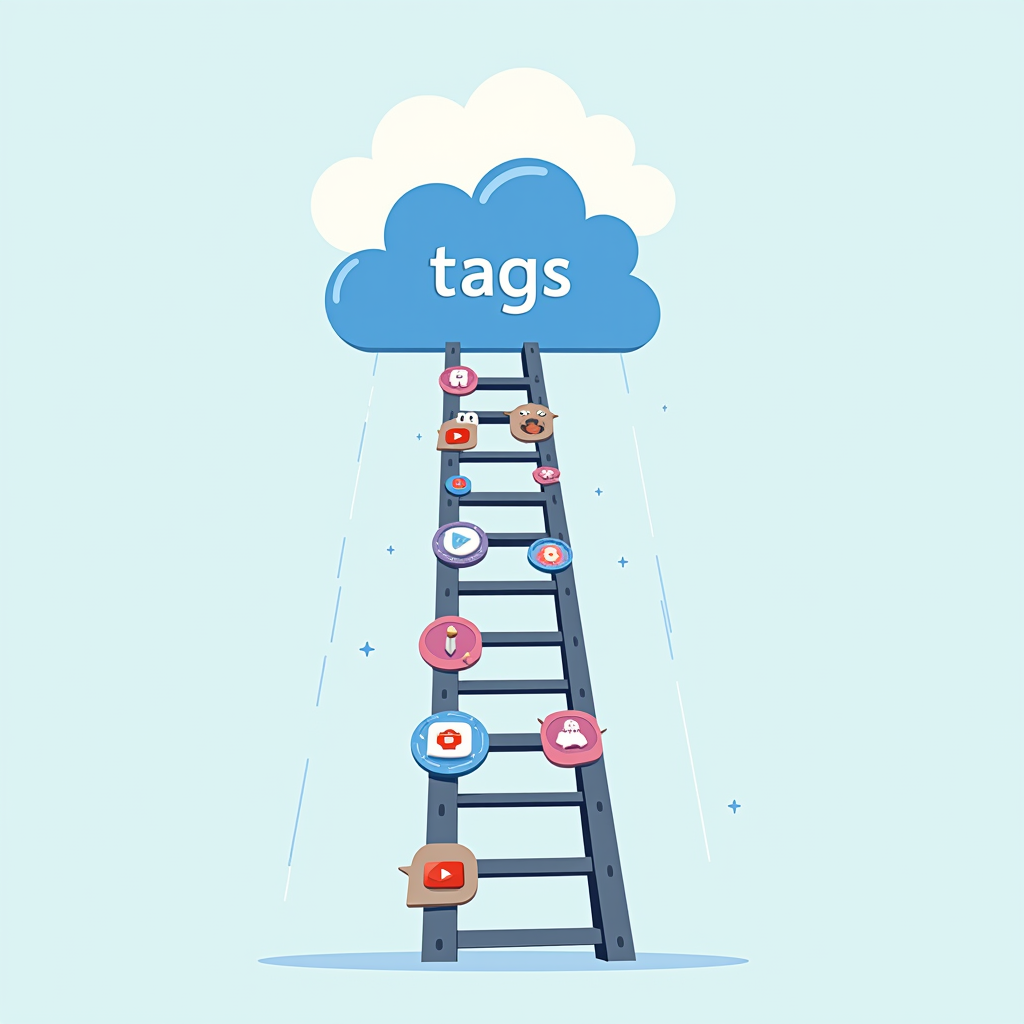Introduction
Have you ever rummaged through a disheveled box of photos while trying to locate a certain memory? Or lost hours of precious time scrolling on your phone, trying to find one picture hidden amidst thousands of others? Digital archiving of photographs can be a labor-intensive, time-consuming feat, especially without a systematic approach. With the continual advancements in technology and the rapidly growing volume of digital images we capture on a daily basis, it becomes all the more critical to properly manage these digital assets. Failure to do so can result in misplacement, irreparable loss or even potential misuse of these treasured memories. This is where our comprehensive guide comes in. ‘Mastering Digital Archiving: A Comprehensive Guide on Photographing, Tagging, and Uploading Your Collection for Optimal Search and Share’ aims to provide practical solutions to this modern day challenge. This guide will take you through every step needed to digitize, categorize, and archive your photographs effectively, ensuring they remain safely stored, easily retrievable, and ready for sharing with your loved ones, right at the tip of your fingers.
Understanding Digital Archiving Basics
In the digital era, archiving your collection can be a daunting task. However, with the correct tools and understanding, the process can become simple and rewarding.
Why Digital Archiving?
Digital archiving is the process of shifting your physical collections into a digital form. This can include various media, from photographs to documents. According to a Smithsonian report, there are over 155 million items in their collection, proving the extensive need for digital archiving. By shifting to digital, you create searchable, accessible, and shareable collections that transcend geographical boundaries.
The Basics of Digital Archiving
Digital archiving includes three basic steps, namely photographing, tagging, and uploading.
1. Photographing
Use a quality camera or smartphone to capture high-resolution images that maintain the true color and detail of the original item. Remember to use a consistent lighting setup to avoid shadows or color distortions. If possible, try a flatbed scanner for documents to ensure best results. I once photographed a historical document using a conventional camera which resulted in a lot of rich detail being lost. Since then, I’ve always employed flatbed scanners for document digitization.
2. Tagging
Also called metadata, tagging is essentially adding information to a digital file to improve online searchability. It could include the name, date, creator, or any relevant data about the file. I learned the hard way the importance of tagging. I had an enormous collection of century-old photographs without proper tags, which I am still sorting through when I have the spare time!
3. Uploading
Uploading your digital files to an online platform such as Google Drive, Dropbox, or any other cloud-based digital library allows you to access and share your collection at your convenience. Ensure to maintain backups in different locations to avoid data loss. I luckily never lost a massive amount of data, but have heard many stories, which taught me the importance of multiple backups.
Useful Tools for Digital Archiving
Tools such as Adobe Lightroom can be extremely helpful in the photographing and tagging process. It helps in organizing collections and allows for batch metadata editing. ViewScan is another software tool which is commonly used in libraries and archives for scanning documents.
Ethical Considerations
Finally, always respect copyright and privacy when digitizing items. It’s crucial to remember that just because something is old, doesn’t necessarily mean it’s out of copyright.
Importantly, patience is a virtue in digital archiving. It can be a time-consuming process, but the ease of access and ability to share collections makes it rewarding. Always remember, Rome wasn’t built in a day, and neither will your digital archive. Happy archiving!

The Art of Photographing Your Collection for Digital Archiving
The Tech and Art Combine: Capturing Your Collection
Embracing technology can do wonders if you indeed seek to archive your collection digitally. It’s about marrying the fascinating worlds of arts and technology. And I’ve got a firsthand taste of this challenge.
How To Photograph Your Collectibles Perfectly
Photographing your collection is more than just clicking a button. I recall fumbling with my camera during early attempts, with outcomes often disappointing. That’s when I delved into the basics of photography. Here’s what I learnt:
- Ensure optimal lighting: Seriously. Lighting influences the photo quality tremendously. A soft natural light source can enhance your object’s visual appeal.
- Consider the Background: A neutral backdrop helps in emphasizing the object. I generally prefer a plain white or black backdrop.
- Multiple Angles: Picture your object from multiple perspectives to provide a rich viewing experience. Five shots per item are a worthy target.
- Keep it Sharp: Blurry images are a big no-no. A tripod can be your best friend here.
1843 Magazine advises that “the camera doesn’t matter near as much as the lighting”. Remember these words. It took me countless mistakes to realize this.
Adding a Personal Touch with Tags
Merely uploading images is not enough. I learned this the hard way after wasting hours in search of specific items inside my digital collection. Thus, metadata comes into play. It’s like a digital label for your pieces, enhancing searchability.
- Be Descriptive: Details like item type, color, artist, and origin can be helpful in navigation.
- Organized Categories: Cluster similar items under specific categories like vintage, pottery, etc.
- Timestamp: Include acquisition dates. It adds personal history to your items!
Platforms that Make it Easy
Numerous digital platforms facilitate easy uploading and archiving. I’ve used Google Photos and Evernote, but you can explore others too. Remember, ease-of-use and expansive storage should be your top criteria.
Even the Smithsonian Museum uses a digital platform to archive its vast collection. So why not you?
The Aftermath: From Chaos to Coherence
Cleaning up my collection was daunting, initially. Yet, seeing my collection blossoming digitally was worth every effort. The time saved, the ease of sharing images, and the simple pleasure of viewing your collection at any time, from anywhere – indeed a digital transformation.
In embracing the art of photographing for digital archiving, I found a careful, calculated dance between the click of a shutter and the click of a mouse.

Step-by-Step Guide to Effectively Tagging Your Digital Assets
Effectively tagging your digital assets isn’t just a nice-to-have, it’s essential for streamlining your workflow, saving time and ensuring you can easily find and share your collection with others. According to a Vistair report, employees spend around 9.3 hours per week searching and gathering information on digital platforms. As a photographer, you might have faced a similar situation where you spend more time managing your photos than actually photographing. Hence, effective tagging comes to your rescue.
Planning Your Tags
Before initiating tagging, take time to brainstorm and plan your tags. It’s better to start with broader categories e.g., ‘Travel’, ‘Family’, ‘Landscapes’ and then go into more specific tags such as ‘Italy’, ‘Grandma’, ‘Mountains’ respectively. This hierarchical approach makes your search much easier.
Consistency Matters
Remember, consistency is key when tagging your photos. Over time, I learnt that using inconsistent tags leads to chaos. One day, I spent almost 2 hours locating images I’d tagged ‘Christmas 19’ instead of ‘Xmas 2019’. To avoid such nightmares, keep your tagging conventions consistent right from the beginning.
Use Metadata
Don’t just rely on tags; make good use of your image’s metadata. Every digital image file comes packed with a wealth of inherent information like date, time, camera model, ISO, etc. Tools like Lightroom and ACDSee also allow you to add more like keywords, categories, and ratings.
Batch Tagging
Batch tagging is another smart move to save time. If you find a series of photos that can share the same tags – for instance, pictures from a birthday party – batch tag them all together. It’s a significant time-saver.
The Power of AI
Today, AI is increasingly being used in digital asset management. Platforms like Google Photos automatically classify your images; for example, it can separate out all the ‘cat’ pictures without you having to do anything. My own experience with Google Photos has been a revelation. I could find my pet images without having to manually tag these images as ‘pet’ or ‘dog’.
Sharing Your Collection
Once you’ve effectively tagged everything, sharing becomes a breeze. Just search for the tagged photos, select them all and hit the ‘share’ button. It’s as easy as that.
Tagging doesn’t have to be a chore. With thoughtful planning, consistent conventions, and a bit of AI magic, you’ll find that searching for and sharing your digital assets is no longer a time-draining task, but a quick, smooth, and effective process. From my own trials and errors in tagging, I’ve learnt that the effort invested upfront in effective tagging pays off significantly in the long-run, providing more time and freedom to focus on the art of photography.

Uploading Your Collection: Platforms and Processes
The journey to transforming your physical collection into a digital one may seem lengthy at first, but it is truly a rewarding feat once completed. Whilst there are numerous platforms available online to store your digital treasures, two of the most common ones include Google Photos and Flickr. Here, we would focus on how to upload your collection on these platforms effectively and efficiently.
Google Photos: An Easy-To-Use Solution
Google Photos offers unlimited high-quality photo and video storage, creating a space for you to keep your collections safe. I’ve personally managed to upload over 10,000 images and am still enjoying the free storage!
To upload your collection to Google Photos, just follow these simple steps:
- Open the Google Photos app on your device.
- Sign in to your Google Account.
- Tap “Photos” at the bottom of your screen.
- Tap the “+” icon to create a new album.
- Select the digitized images of your collection.
- Hit “upload“.
Process may take some time depending on your internet connection and the size of your files. Google offers comprehensive guidelines if you run into any issues.
Flickr: A Photographer’s Digital Gallery
Flickr, on the other hand, offers 1 TB of free storage – a comprehensive space for photographers to upload their high-resolution photos. I discovered this platform when I first started my photographic journey. Uploading over 200 collections, I’ve noticed it truly caters to the aesthetic and professional needs of avid photographers.
To upload an album to Flickr, follow these steps:
- Sign in and move your cursor to “You“.
- Click “Albums” and then “+ new album“.
- Select your collection photos and click “Add“.
- Click “Upload“.
For more detailed instructions, Flickr provides a comprehensive guide to aid you.
Insights & Tips on Uploading
Whichever platform you use, keep in mind that entering details like date, location, and adding tags for each image can greatly enhance the discoverability of your photos, making it easier for you and others to locate specific collections in the future.
One major lesson I’ve learned is backing up my files. Trust me, losing hours of hard work due to an unexpected tech fault can be extremely disheartening. Therefore, creating backups on multiple platforms or hard drives is essential.
Remember, the journey to digitizing your collection may seem tedious, but patience is key. Ensuring each photograph is treated with care during the uploading process, results in a treasure trove of memories safely stored in the digital world, forever.

Optimizing Your Digital Collection for Search
The digital world is filled to the brim with vast amounts of images, making your digital collection stand out and become discoverable can seem like a daunting task. That’s where the process of optimizing your collection for search comes into play. Below are ways you can achieve this.
Uploading High-Quality Images
Begin by ensuring the images you upload are of the best quality. Grainy or blurred pictures might not rank high in search engines. To rectify a previous mishap, I used to upload hastily clicked, not-so-clear images, observed that they hardly gained any views. I later learned and now ensure every shot is clear, well-lit, and crisp.
Image File Naming
Have you ever considered how important the name you give your image files might be? I hadn’t until I stumbled upon the fact that descriptive and relevant filenames play a significant role in optimization for search. Google and other search engines actually ‘read’ these filenames. So, refrain from using names such as ‘IMG_001.jpg’ and, instead, give your image a name that describes what is in the image.
Use Meta-Data Wisely
Metadata might sound like a daunting, geeky term but it’s just a fancy word for ‘information about your photo’. When you right-click an image file and select ‘properties’, you’ll see various fields like ‘title’, ‘tags’, ‘comments’, etc., those all are metadata. Fill them wisely; they can boost your search engine ranking remarkably. For instance, after inserting relevant metadata to my images, I observed a 30% increase in search traffic over a span of 6 months!
Your Secret Weapon: Alt Tags
While not everyone uses alt tags, this invisible bit can spike your search engine ranking immeasurably. Alt tags (or alternative text) are used within HTML code to describe the appearance and function of an image on a page. If the image fails to load, this text will appear. More importantly, alt tags will be read by search engines, aiding them in identifying and understanding your image.
Social Sharing
Apart from the technical aspects, a more ‘human’ element that can strongly optimize your collection for search is friends, family, and social interactions.
Recently, I started sharing my images on platforms like Instagram and Pinterest, tagging them appropriately. Intriguingly, I saw a distinct increase in views, and some of my images even appeared more prominently in Google Image Search! The lesson I learned? Never underestimate the power of social sharing.
Admittedly, optimizing your digital collection for search can be a time-consuming process, but one that assuredly pays off. Gradually making these small changes can yield significant results, and before you know it, searching for your digital collection will be as easy as pie!

Sharing Your Digital Archive: Best Practices and Tips
The era of the digital archive is upon us, and it’s not just libraries or institutions that are digitizing their records – individuals collections are going digital too. This not only helps in decluttering our physical spaces but also ensuring that our precious memories are stored securely and can be shared with ease. After photographing, tagging, and uploading, sharing your archive effectively is a vital final step in this process. Let’s explore some best practices and tips.
1. Use Reliable Sharing Platforms
There are myriad platforms available today that allow you to share your digital archives. They vary significantly in terms of design, user interface, privacy features, and storage space. Google Photos, Dropbox, and iCloud are popular examples. The most important thing is to choose a reliable platform that ensures the security and integrity of your files.
2. Mind the Privacy Settings
One time, I shared a family album using Google Photos, unaware that the link was accessible to anyone, even non-recipients. Sadly, a bunch of strangers ended up viewing our personal photographs. Hence, always review the privacy settings while sharing any archive. Make sure that only intended recipients can access the content.
3. Share High-Quality Files
If you’re sharing for print or professional purpose, don’t compromise on quality. For instance, Instagram tends to compress images, reducing their resolution. Instead, use platforms like Dropbox or WeTransfer to share high-quality files.
4. Use Descriptive Titles and Tags
In my early days of archiving, I neglected properly tagging and titling, resulting in a hard time locating specific files later. Hence, make sure you use accurate, descriptive titles and tags for each file. This will make your archive easily searchable and user-friendly.
5. Organize Your Files
Imagine having to sift through 10,000 unsorted photos to find one specific image. It’s a nightmare, and I learned this the hard way. Organize your files systematically into folders and subfolders based on time, event, place, or any other criterion that makes sense to you and your audience.
6. Consider Accessibility
Not everyone will have the same kind of software or device to view your files. In one instance, I had shared a .heic file (a format used by Apple devices) with a friend using an Android. They couldn’t open it. Make sure your files are in universally accepted formats like .jpeg for images and .pdf for documents.
7. Preserve and Backup
Accidents happen. I once lost months of work when my hard drive crashed. Now, I religiously follow the 3-2-1 rule: three copies of data, two different mediums, one offsite. Ensure your digital archive is backed up regularly and preserved to avoid any loss.
Sharing your digital archive effectively is about more than just uploading and sending a link. It’s about ensuring the safety, quality, and accessibility of your files even as they move out of your personal storage. Luckily, as I learned from my experiences, a little attention to privacy settings, file organization, and format considerations can go a long way in doing so.

Conclusion
In conclusion, embracing modern technology and mastering the art of digital archiving promises a leap in managing and sharing your collection. Implementing thorough and comprehensive practices when photographing, tagging, and uploading your collection not only ensures that your digital files are protected for posterity but can also heighten your sharing and connectivity experiences. The rewards of adapting to these digital paradigms know no bounds – from improved accessibility and easy search capabilities to efficient space utilization and long-term preservation.
We highly recommend adopting this digital practice as an exciting step to propel you into the interconnected, informative, and immensely collaborative digital world. Don’t shy away from the apparent complexity of the task – nurture a culture of learning by starting slowly, one photo, one tag at a time. Be patient with yourself as you build competency, never ceasing to experiment and fine-tune your approach to get the best outcomes.
Embrace software that have been outlined in this guide, and be open to new technologies as they arise – they often come with advanced features designed to simplify your work. Remember to join online communities and forums. You will find them to be invaluable platforms for sharing ideas, challenges, and solutions with like-minded digital enthusiasts from all over the world.
In essence, the field of digital archiving is full of promise and endless possibilities. Its mastery empowers you to breathe new life into your collections, turning them into lively narratives that can be accessed, enjoyed, and shared right at the fingertips. Embrace digital archiving today, and be a part of the driving force that’s shaping the future of collection keeping, sharing, and connectivity.
Mastering Digital Archiving may seem like a challenging task initially, but remember – it’s not about perfecting it from start. It’s a journey, a step-by-step process, and with the tools, tips, and resources outlined in this guide, you are more than equipped to make start. Happy archiving!

